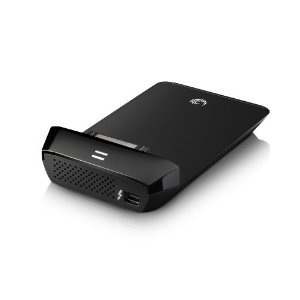
Using a Thunderbolt SSD drive as a boot drive for an iMac can boost read/write performance up to ten times. When I added a LaCie Thunderbolt drive to my 2011 iMac there was a dramatic increase in overall speed, up to 490Mb/s, which I described in detail in March this year.
It continues to work faultlessly and, apart from the intrusive fan noise, has been a faithful companion. At no stage have I had to make compromises because of the external primary drive and I can think of no obvious disadvantages.
I keep all my system files and data on the 240GB Little Big Disk although I could have opted to leave the user folders on the 1TB internal disk of the iMac. Now I have five months’ trouble-free experience I am considering moving over the user folders if possible. System files, libraries (other than the user libraries) and applications must stay on the boot drive. At the moment I am not sure that a transfer of the user folders can be accomplished easily on Montain Lion but I intend to find out.
LaCie Little Big Snag
There is just one major snag with the LaCie which I hadn’t anticipated when I bought it. Since the unit consists of not one homogenous drive but two separate 120GB drives, File Vault cannot be enabled. File Vault is desirable, particlarly since the drive is so small and attractive, but it wasn’t to be.
The price of £599 is very high and, with hindsight, I could have had a similar set up for much less. A single 256GB internal SATA–3 SSD can be had for under £200 and, with a suitable Thunderbolt adaptor, would provide similar performance and options without the noise. And, to add to the attractions, it would allow the use of File Vault.
I started thinking about this when I bought a Seagate 1TB GoFlex 7,200 rpm HDD a couple of months ago. To enable its use with Thunderbolt, I also took the rather pricy Seagate Thunderbolt adapter (£100).
These GoFlex drives, despite being external and therefore cased, use a SATA connector. They come with adapters and cables for Firewire 800 and USB 2.0 (regrettably, not USB 3). The Thunderbolt adaptor has a SATA interface for the drive but comes without a cable. The Apple cable is a further £39.
Good news
The good news is that most 2.5in SATA internal drives can be plugged into the GoFlex Thunderbolt adapter. The drive docks with the SATA interface but sags slightly because of the absence of a Shell case. If it is to be a permanent setup, it’s an easy task to add a bit of padding under the drive to keep it in line and avoid any stress on the connector.
I’ve tried mine with a Samsung 256GB SSD and a Toshiba 128GB device and both work well and produce fast results. So, if you add together the cost of an internal 256GB solid-state drive, the Seagate Thunderbolt adaptor and a Thunderbolt cable, the cost is no more than £340 compared with LaCie’s £600.
It should be possible to get all the kit for less than £300 by shopping around. Don’t forget, too, that if you intend to keep only system files, root library and applications on an external SSD, you could probably get away with a 64GB device which would be much cheaper.
If you have any recent Mac equipped with a Thunderbolt port but a slow HDD drive, you can boost IO performance by up to ten times for as little as £200.
